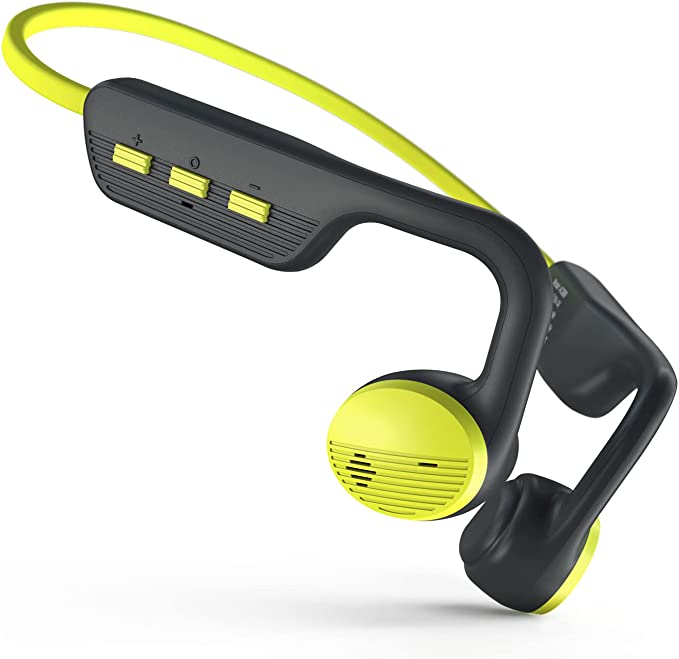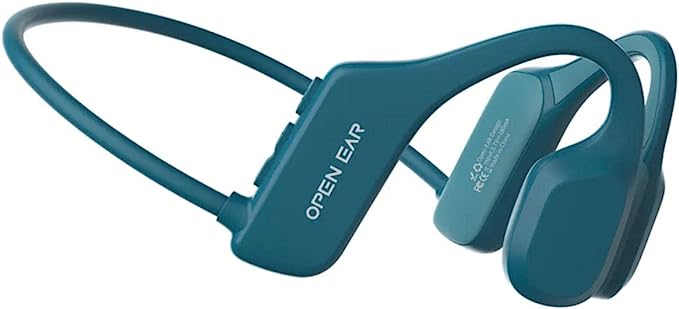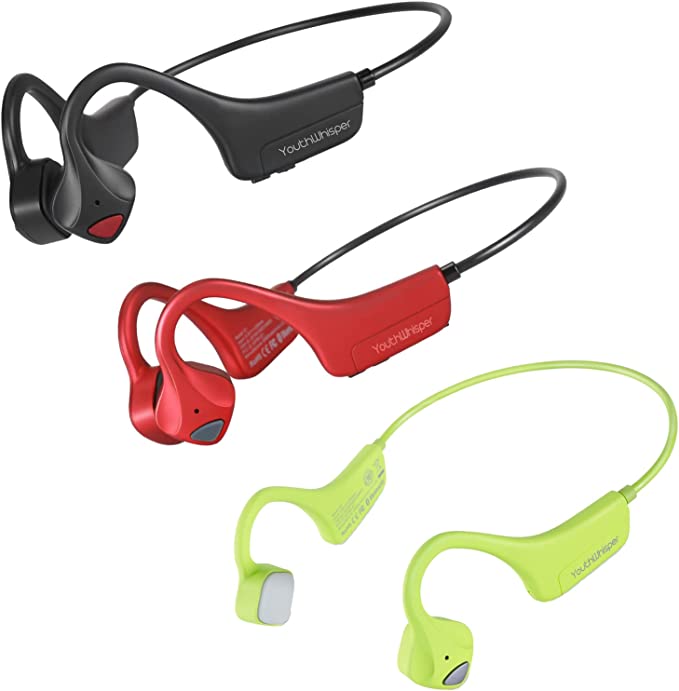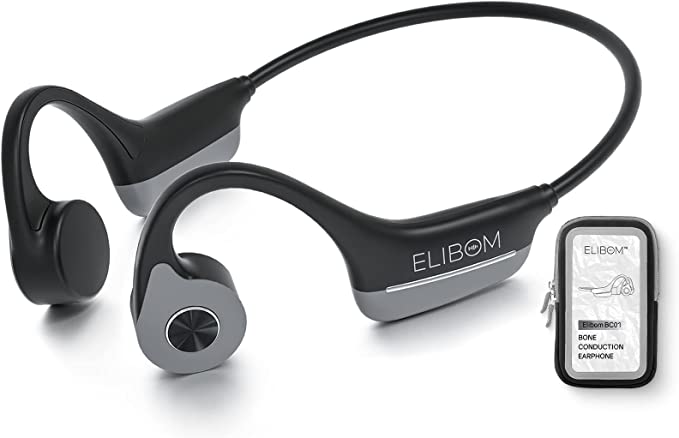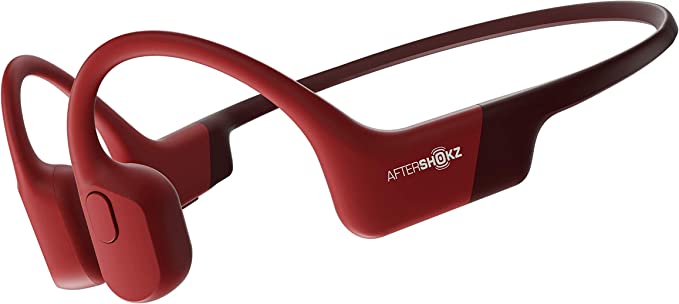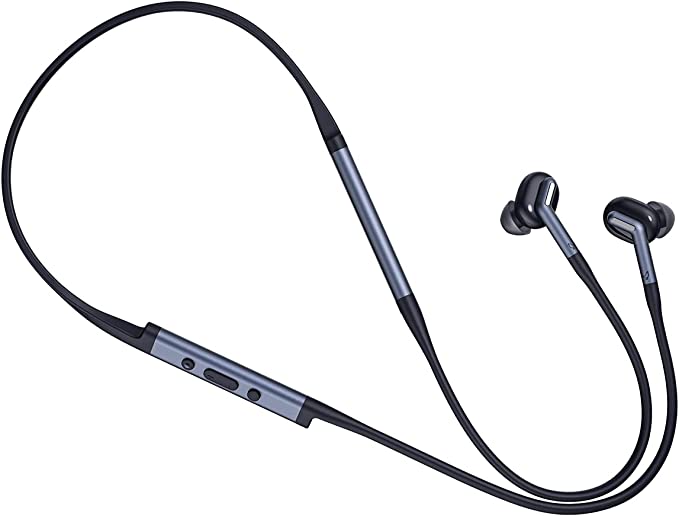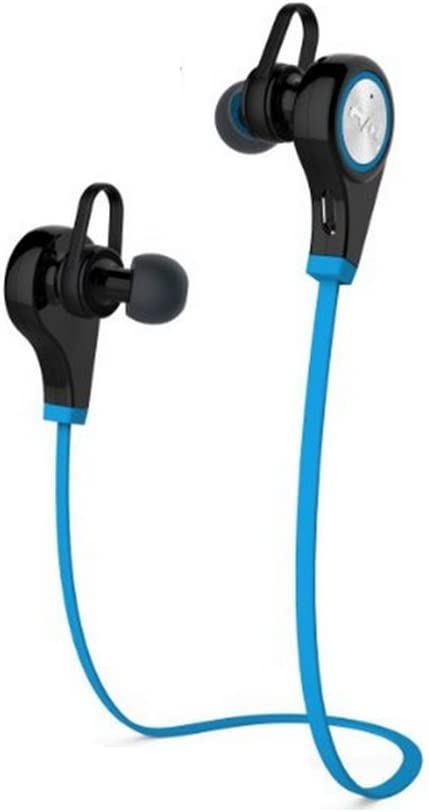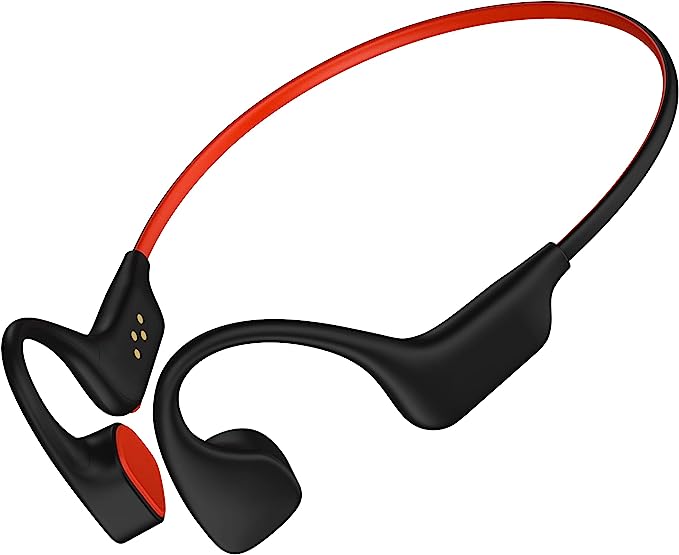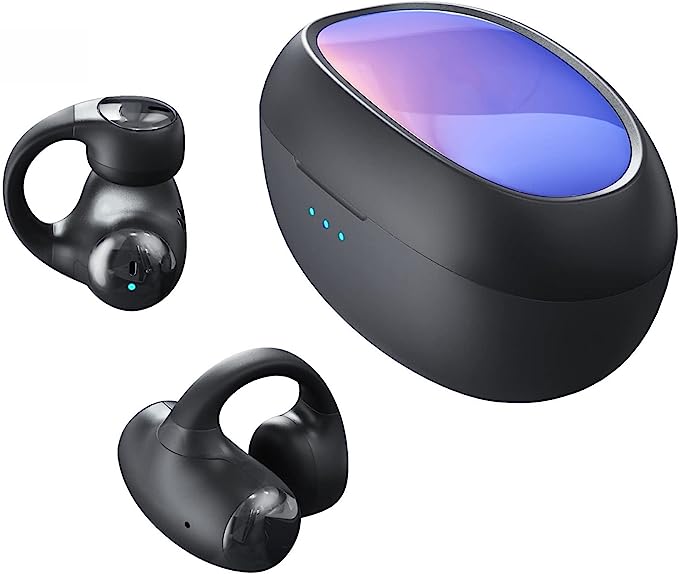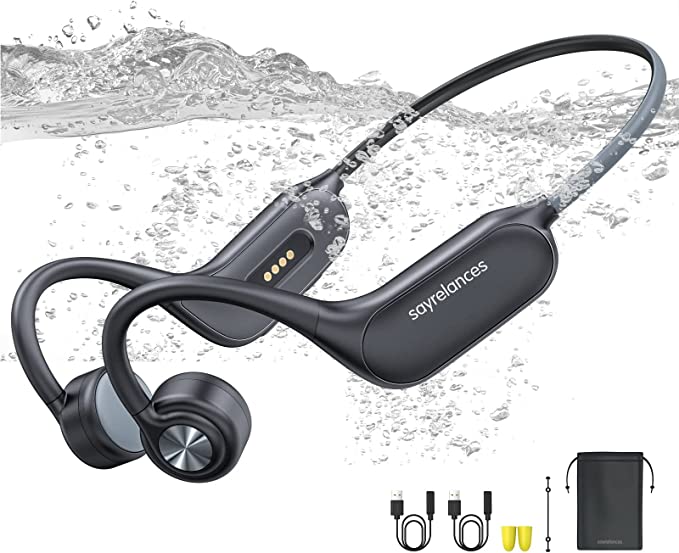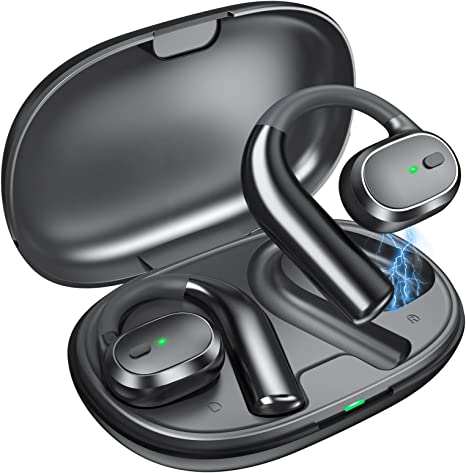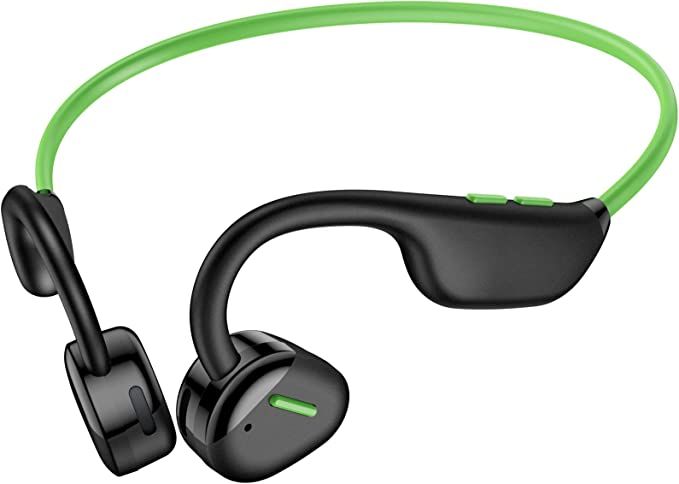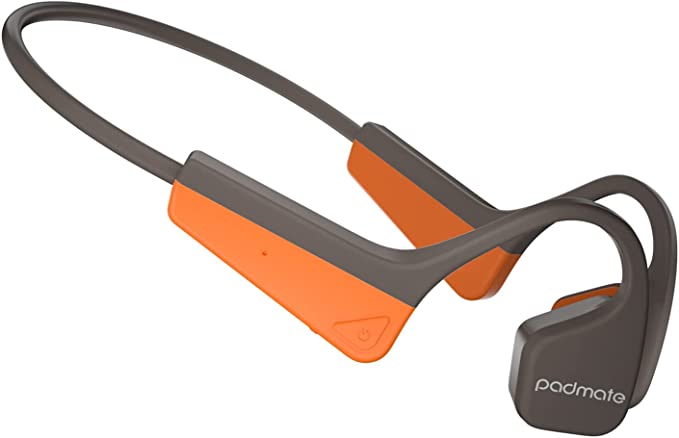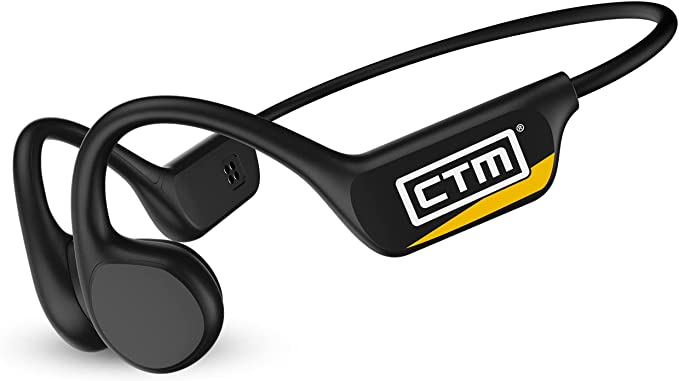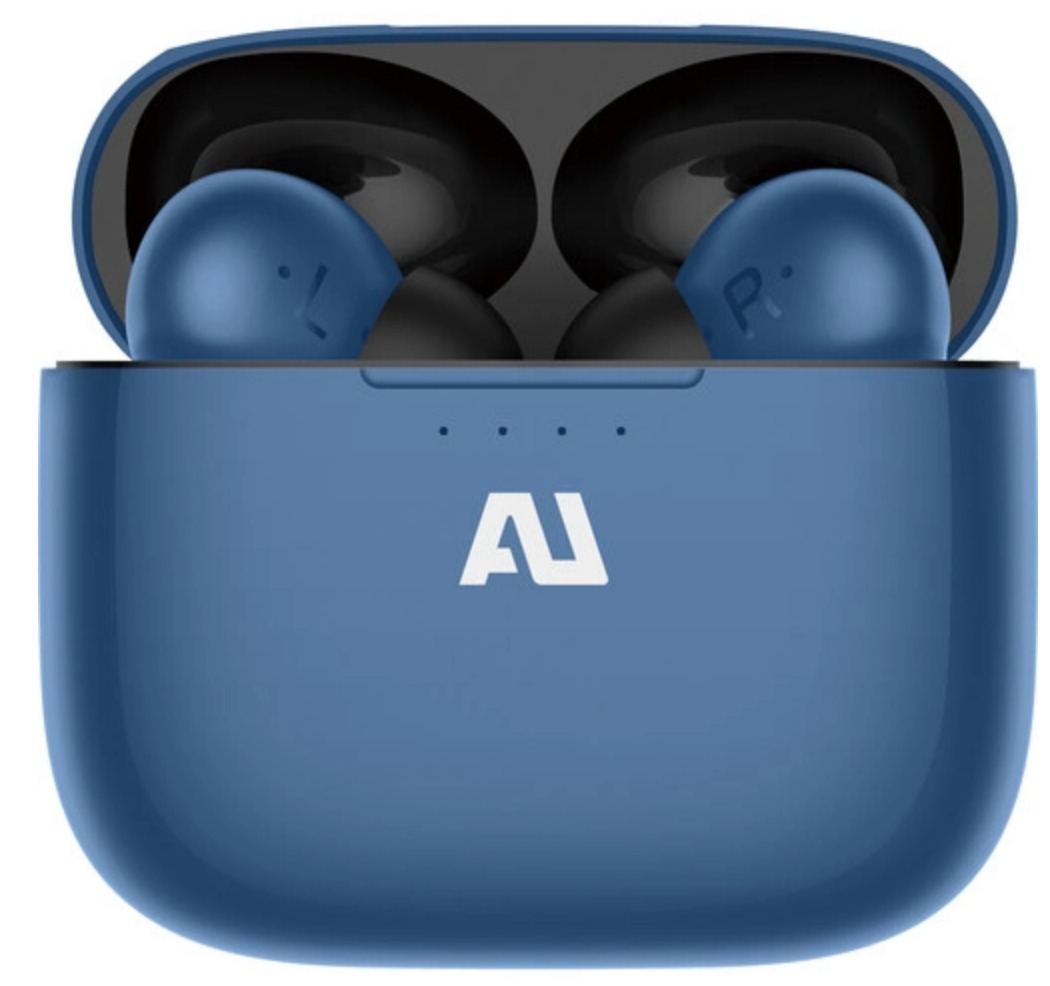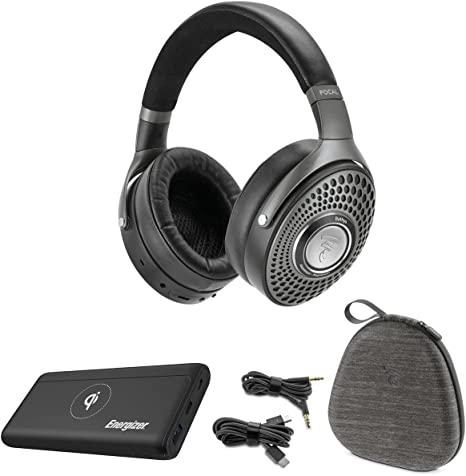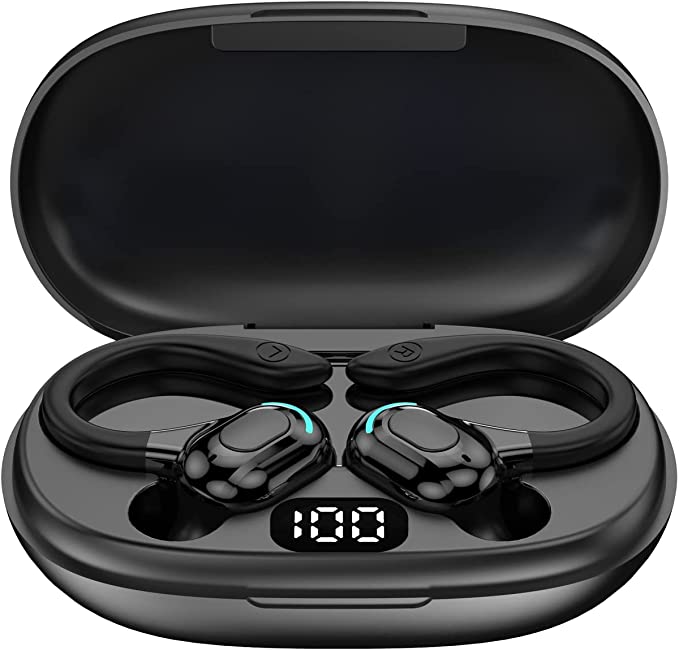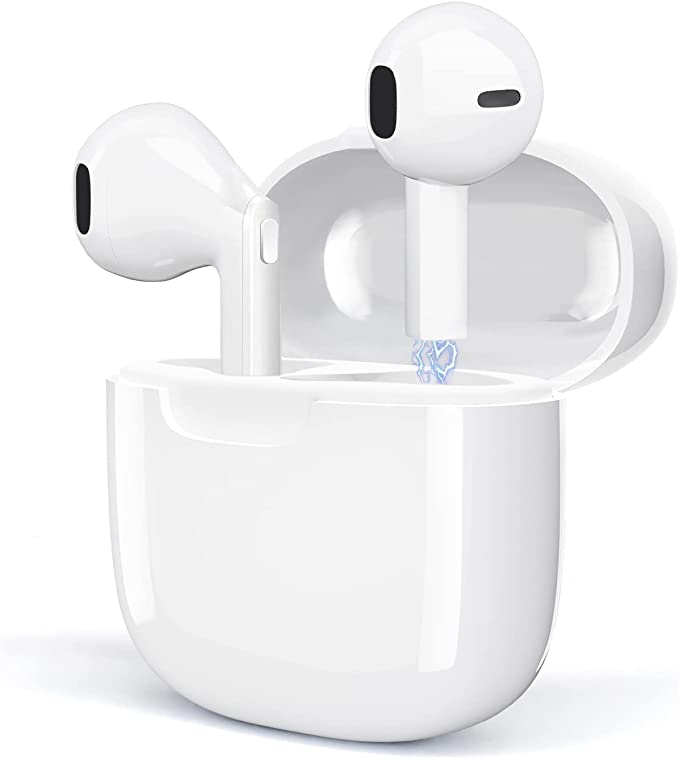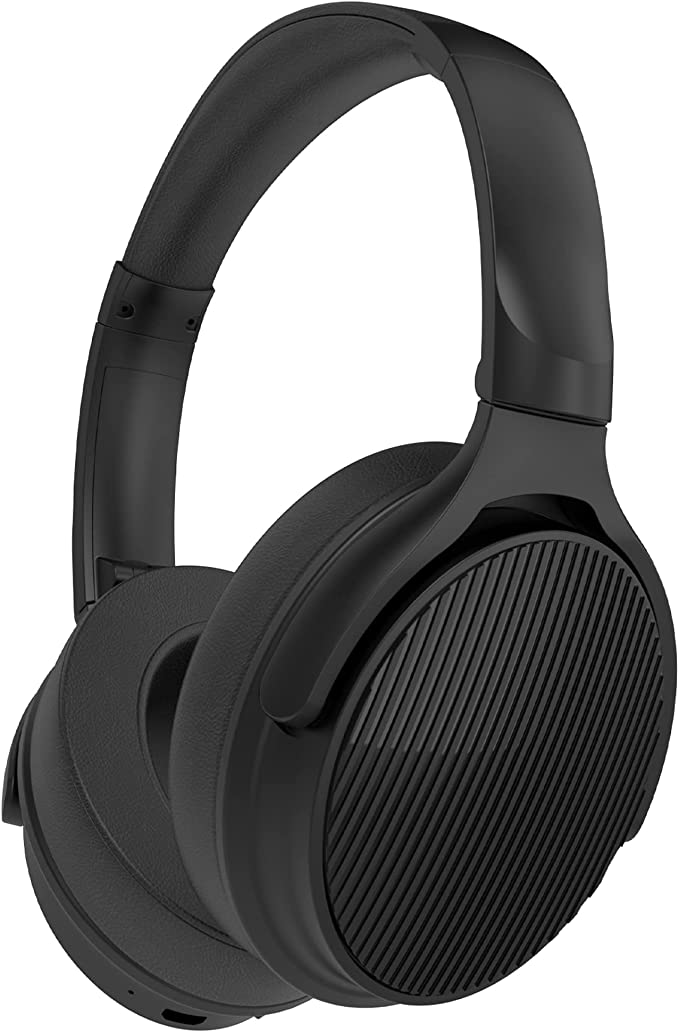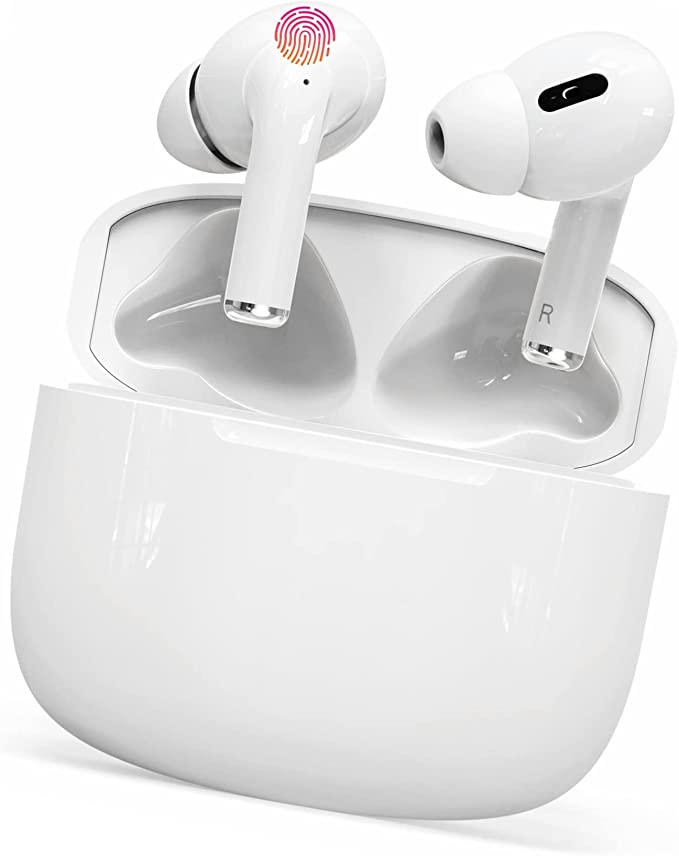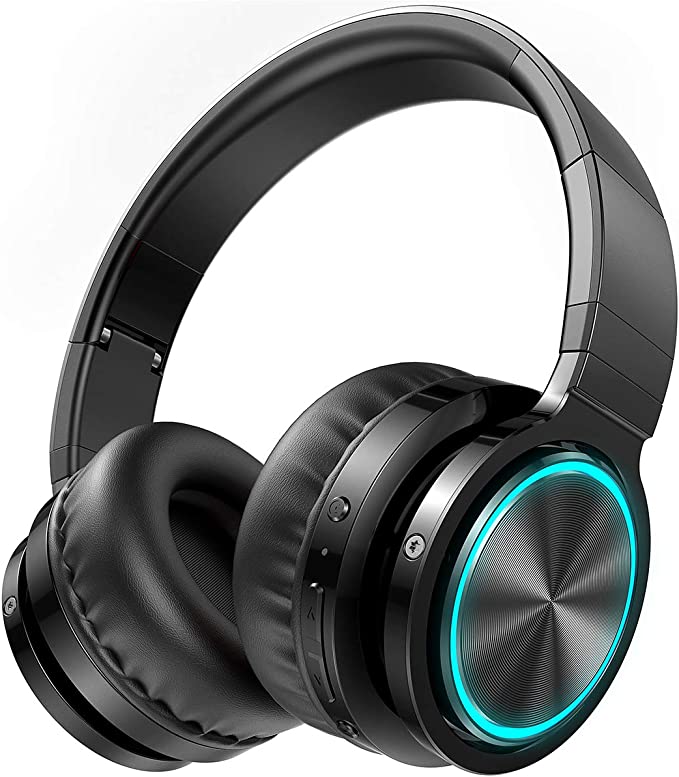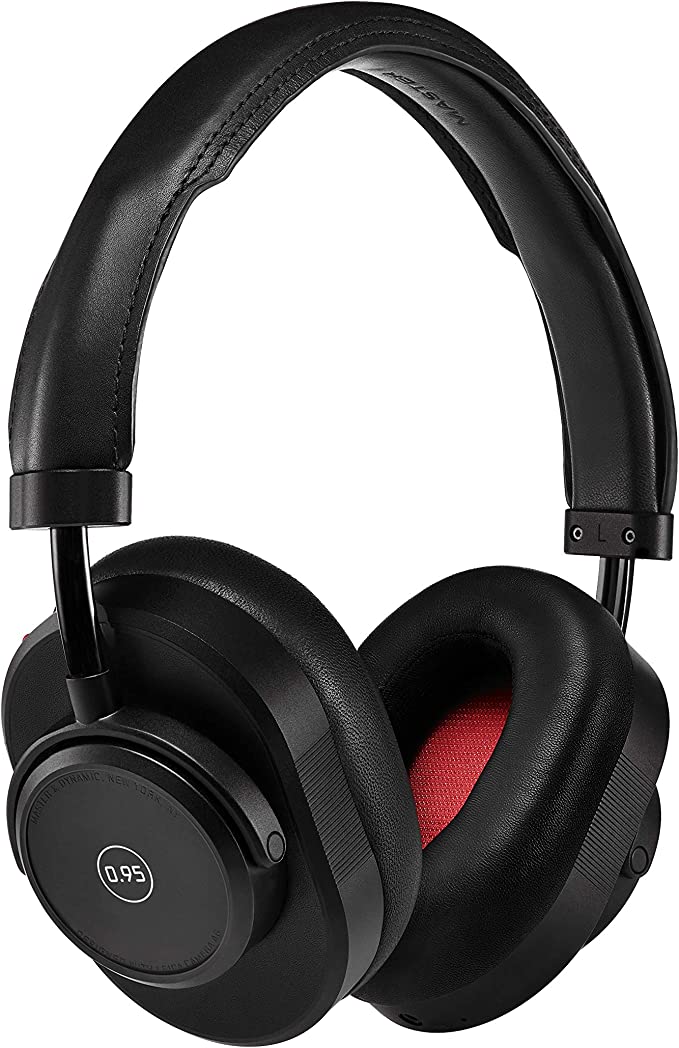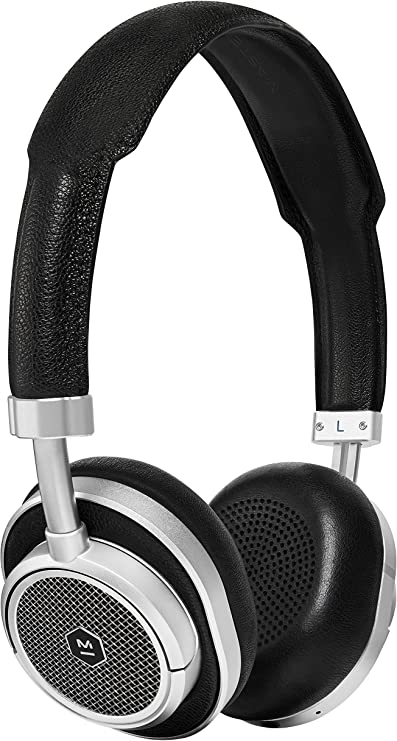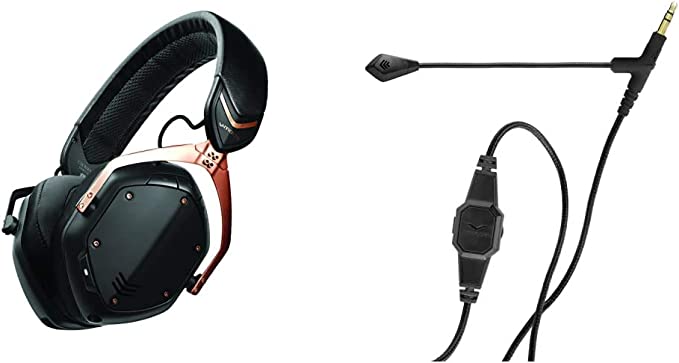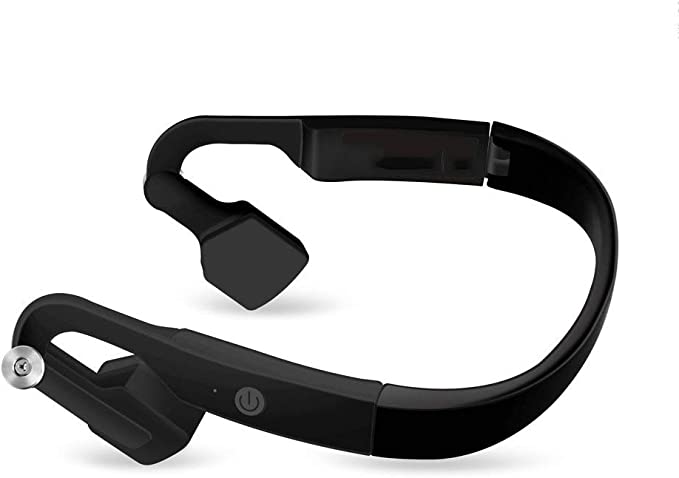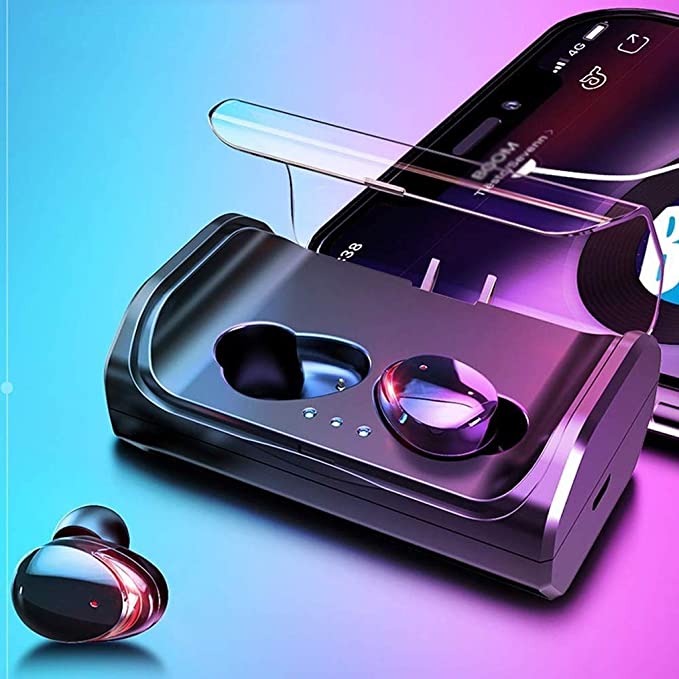idudu iKB Bone Conduction Headphones: Open-Ear Sound for Safe & Comfortable Workouts
Update on March 21, 2025, 1:30 p.m.
As an audiologist, I often talk to patients who love to listen to music while they exercise, but they’re frustrated with traditional headphones. Runners and cyclists, in particular, face a dilemma: enjoy their favorite tunes and risk missing important sounds from their environment, or go without music and feel less motivated. Traditional earbuds can block out crucial sounds like approaching cars, other cyclists, or even warning shouts. Over-ear headphones, while sometimes offering better sound quality, can be bulky, uncomfortable, and make you sweat. This is where bone conduction technology offers a fascinating and practical solution.

A Quick Lesson in How We Hear (The Traditional Way)
Before we explore bone conduction, let’s recap how we typically hear, a process called air conduction. Sound, at its core, is simply vibrations. When a guitar string is plucked, it vibrates, creating sound waves that travel through the air. These waves reach your outer ear and are funneled into your ear canal, causing your eardrum to vibrate. These vibrations are then amplified by three tiny bones in your middle ear (the malleus, incus, and stapes) and transmitted to the cochlea, a fluid-filled, snail-shaped structure in your inner ear. Inside the cochlea, thousands of microscopic hair cells detect these vibrations and convert them into electrical signals that your brain interprets as sound.
Introducing Bone Conduction: A Different Path to Sound
Bone conduction takes a different route. Instead of sending sound waves through the air and your ear canal, it transmits vibrations directly through the bones of your skull to your inner ear, effectively bypassing the eardrum. It might sound like science fiction, but it’s a principle that’s been around for centuries.
A Bit of History: From Beethoven to Modern Gadgets
One of the most famous examples of bone conduction is linked to Ludwig van Beethoven, the renowned composer who began to lose his hearing in his late 20s. It’s said that he discovered he could still hear music by clenching a rod between his teeth and touching the other end to his piano. The vibrations from the piano traveled through the rod, through his jawbone, and directly to his inner ear, allowing him to perceive the sound despite his deafness.
While Beethoven’s method was a clever workaround, modern bone conduction technology is far more sophisticated. It relies on small devices called transducers, which convert electrical signals into mechanical vibrations. These transducers are placed against the bones of the skull, usually the cheekbones just in front of the ears.

The idudu iKB: Putting Bone Conduction into Practice
The idudu iKB Bone Conduction Headphones are a great example of how this technology is applied today. These headphones are designed to rest comfortably on your cheekbones, leaving your ear canals completely open. This seemingly simple design choice has profound implications for both safety and comfort.
Feature Focus: Open-Ear Design - Safety and Awareness
This is perhaps the most significant advantage of bone conduction headphones, especially for athletes and anyone active outdoors. Because your ear canals are unobstructed, you can hear ambient sounds clearly. This means you can enjoy your music or podcasts while remaining fully aware of your surroundings – approaching cars, cyclists, conversations, even the sounds of nature. This heightened situational awareness is crucial for safety, whether you’re running on a busy street, cycling on a trail, or simply walking through a park.

Feature Focus: Comfort and Fit - Light as a Feather
The idudu iKB headphones are incredibly lightweight, weighing in at just 34 grams. This, combined with their over-ear design and skin-friendly rubber construction, makes them remarkably comfortable to wear, even for extended periods. Many users report forgetting they even have them on! Unlike traditional earbuds that can cause pressure and discomfort in the ear canal, or over-ear headphones that can feel heavy and trap heat, the iKB’s design minimizes contact points and maximizes airflow.
Feature Focus: Sweatproof and Ready for Action (IP56)
If you’re using headphones for workouts, sweat resistance is essential. The idudu iKB boasts an IP56 rating, which means it’s protected against dust and powerful water jets. The “5” in IP56 indicates a high level of protection against solid particles, meaning dust won’t easily penetrate the device. The “6” signifies protection against strong water jets, meaning you can confidently wear these headphones during intense, sweaty workouts or even in light rain without worrying about damage. However, it’s important to note that IP56 is not fully waterproof – you shouldn’t submerge them in water.
Feature Focus: Battery Life - Powering Your Day
The iKB headphones offer a respectable 6 hours of continuous music playback or talk time on a single charge. This is enough to power most workouts or commutes. The standby time is an impressive 120 hours, and a full recharge takes just 2 hours. This means you can quickly top up the battery between uses, ensuring you’re always ready to go. The battery life provided is a pretty decent one, meeting our daily needs.
Feature Focus: Sound Quality - A Different Kind of Listening Experience
This is where it’s crucial to manage expectations. While the idudu iKB, using a Qualcomm chip, delivers a surprisingly clear and detailed sound, it’s important to understand that bone conduction audio is different from air conduction audio. Due to the physics of transmitting vibrations through bone, the bass response is typically less pronounced than with traditional headphones. This is because lower frequencies (bass) are more efficiently transmitted through air than through bone.
However, the iKB compensates for this to some extent with its advanced audio processing. While you won’t get the deep, thumping bass of high-end over-ear headphones, you’ll still experience a balanced and enjoyable sound profile, particularly in the mid and high frequencies. The clarity of vocals and instruments is often surprisingly good. The chip helps ensure the details of your songs.
Feature Focus: The Wireless Wonder of Bluetooth
The idudu iKB utilizes Bluetooth technology for a seamless wireless connection to your smartphone or other devices. The inclusion of a Qualcomm chip, a well-respected name in wireless technology, generally indicates a more stable and reliable connection compared to headphones using lower-quality chips. A stable connection means fewer dropouts and interruptions, ensuring a smooth listening experience. The specific Bluetooth version and supported codecs (e.g., SBC, AAC, aptX) would provide further insight into the audio quality and latency, but this information isn’t readily available from the provided details. However, based on general experience with Qualcomm chips, we can expect a reasonably low latency, which is important for video playback and phone calls.

Addressing Concerns: Sound Leakage and Call Quality
Two common concerns with bone conduction headphones are sound leakage and call quality.
Sound Leakage: Because the transducers vibrate against your skull, some of that vibration can escape into the surrounding air, potentially becoming audible to others nearby. This is more likely to occur at higher volumes. While the iKB’s design minimizes leakage, it’s still something to be aware of, especially in quiet environments. The best way to mitigate this is to keep the volume at a reasonable level.
Call Quality: The provided customer reviews indicate mixed experiences with call quality. Some users report muffled sound or background noise being picked up by the microphone. This is a common challenge with bone conduction headphones, as the microphone placement is less direct than with traditional earbuds that have a boom microphone closer to the mouth. In quieter environments, call quality is likely to be better, while noisy environments may present more of a challenge.
Who Can Benefit from Bone Conduction?
Bone conduction headphones are a great option for a variety of people:
- Athletes: Runners, cyclists, hikers, and other outdoor enthusiasts who need to stay aware of their surroundings.
- Office Workers: Individuals who want to listen to music or podcasts while still being able to hear colleagues and phone calls.
- Commuters: People who want to enjoy audio content while remaining aware of announcements and their surroundings on public transportation.
- Individuals with Certain Types of Hearing Loss: Bone conduction can bypass some outer or middle ear problems, making it a viable option for some people with hearing impairments. (It’s crucial to consult with an audiologist to determine if bone conduction is suitable for your specific type of hearing loss.)
- Anyone who finds traditional earbuds uncomfortable: The open-ear design avoids the pressure and occlusion associated with in-ear headphones.
The Future of Sound: Where Bone Conduction is Headed
Bone conduction technology is constantly evolving. We can expect to see continued improvements in sound quality, particularly in the bass response, as well as reductions in sound leakage. Smaller, more discreet designs are also likely, and we may see further integration with other technologies, such as fitness tracking and voice assistants. There’s even potential for bone conduction to be used in more advanced hearing aids and other medical devices.
Making an Informed Choice
The idudu iKB Bone Conduction Headphones offer a compelling combination of safety, comfort, and functionality. They’re a great example of how bone conduction technology can enhance the listening experience, particularly for those who prioritize situational awareness. While they may not deliver the same audiophile-grade sound quality as high-end traditional headphones, they provide a unique and valuable alternative for a wide range of users. If you’re looking for a way to enjoy music and podcasts while staying connected to the world around you, bone conduction is definitely worth exploring. And the lifetime warranty provided a solid support to the users. Remember to always prioritize your hearing health and consult with an audiologist if you have any concerns.
